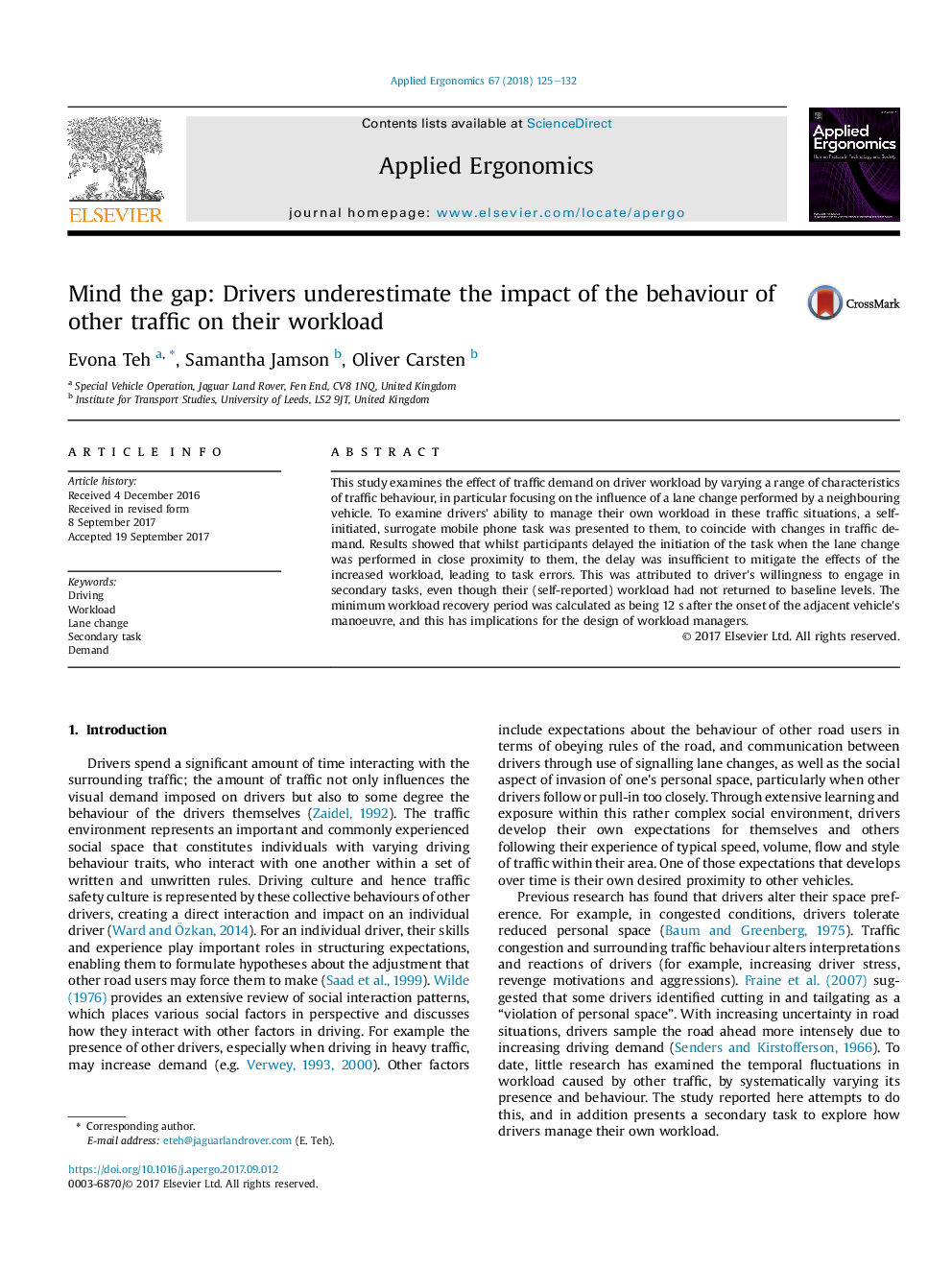| Article ID | Journal | Published Year | Pages | File Type |
|---|---|---|---|---|
| 4971908 | Applied Ergonomics | 2018 | 8 Pages |
Abstract
This study examines the effect of traffic demand on driver workload by varying a range of characteristics of traffic behaviour, in particular focusing on the influence of a lane change performed by a neighbouring vehicle. To examine drivers' ability to manage their own workload in these traffic situations, a self-initiated, surrogate mobile phone task was presented to them, to coincide with changes in traffic demand. Results showed that whilst participants delayed the initiation of the task when the lane change was performed in close proximity to them, the delay was insufficient to mitigate the effects of the increased workload, leading to task errors. This was attributed to driver's willingness to engage in secondary tasks, even though their (self-reported) workload had not returned to baseline levels. The minimum workload recovery period was calculated as being 12Â s after the onset of the adjacent vehicle's manoeuvre, and this has implications for the design of workload managers.
Related Topics
Physical Sciences and Engineering
Computer Science
Human-Computer Interaction
Authors
Evona Teh, Samantha Jamson, Oliver Carsten,
